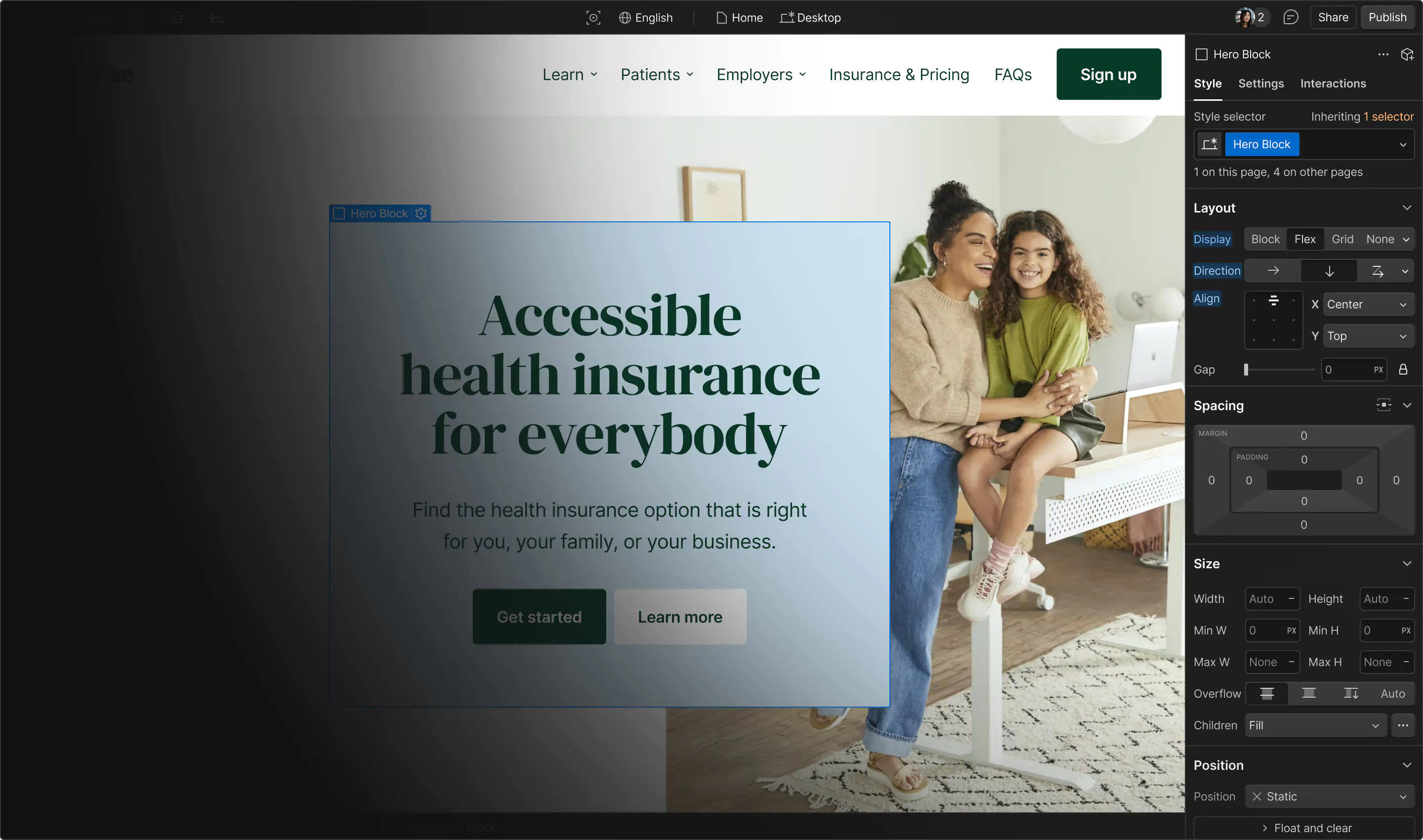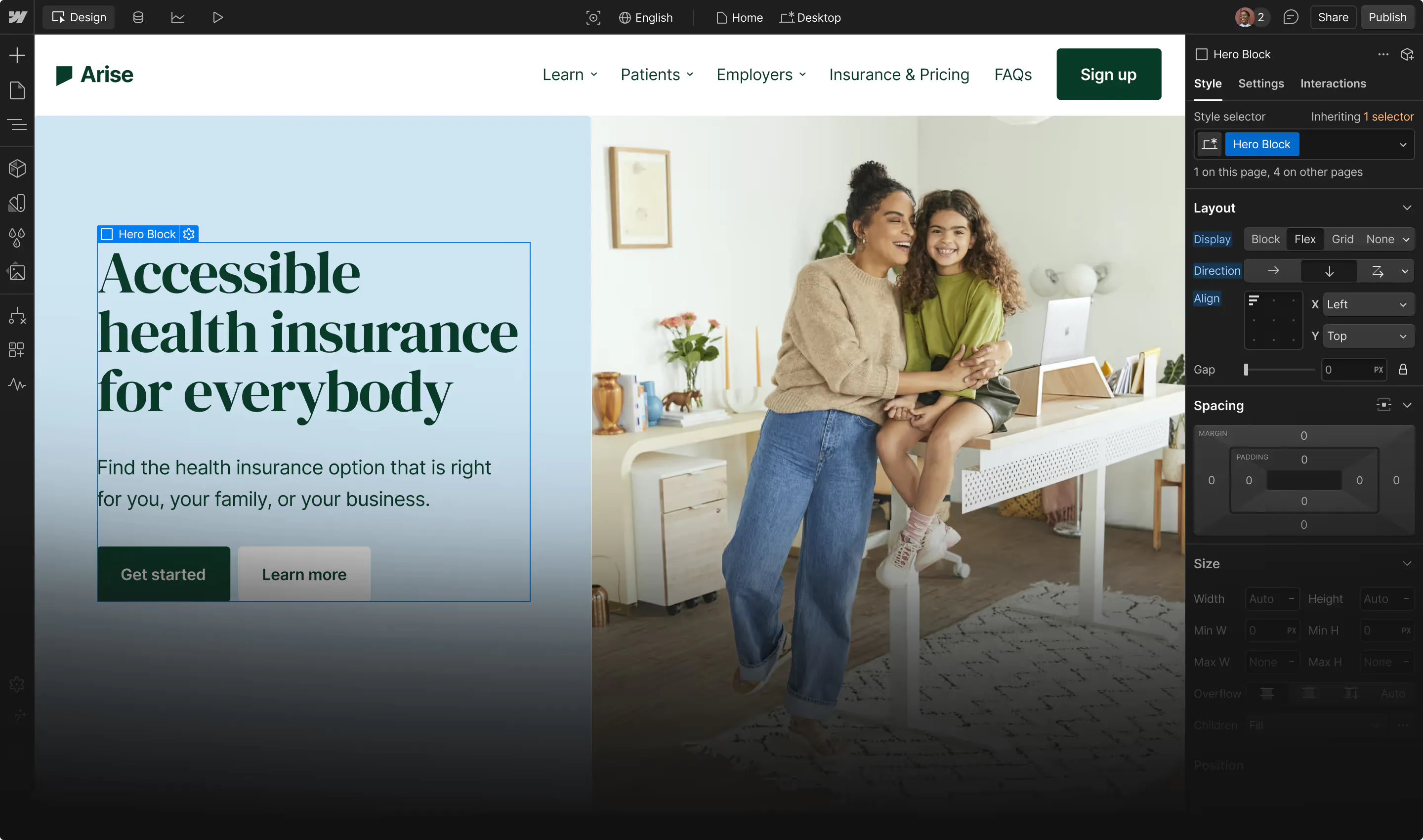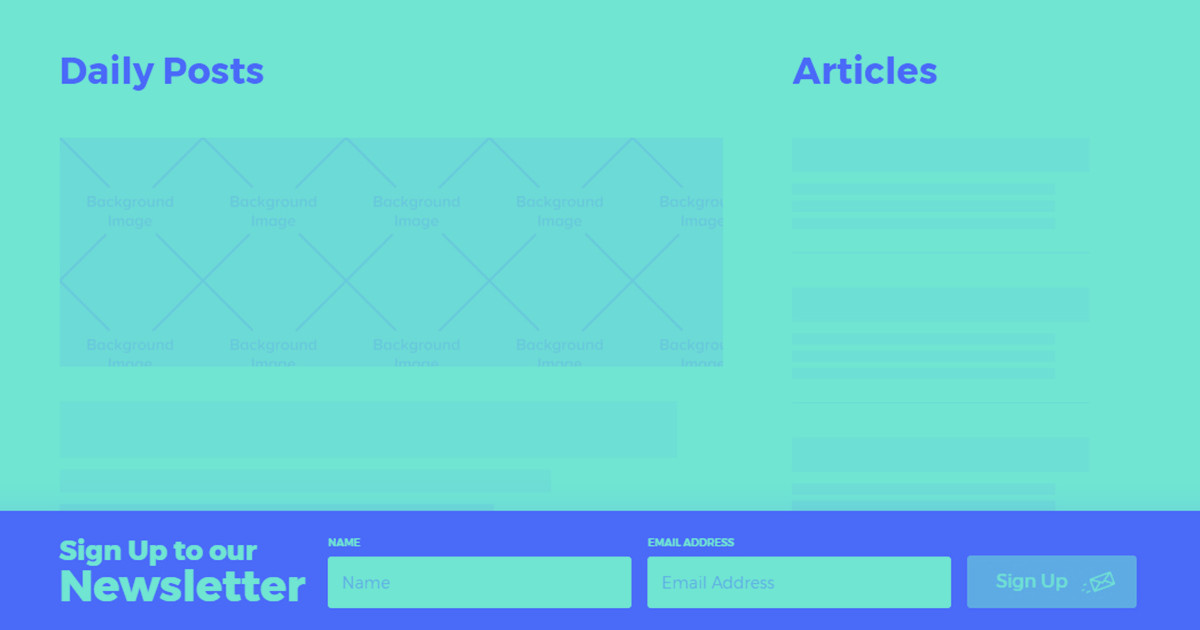The web is experiencing its biggest transformation in decades, and AI-driven workflows are at the center of this shift.
In the recent Webflow webinar Architecting for AI: Strategies to drive AEO, conversion, and impact, industry experts Steven Male (Head of Growth Marketing, AirOps), Sarah Mendham (Technical Lead, Beyond), and Dan Locke (Head of Digital, IMB Bank) shared practical strategies for adapting to this new reality. Their insights reveal how businesses can balance AI automation with human expertise to create content that performs well in both traditional search and emerging answer engines.
The stakes are high: research from Semrush shows that visitors from large language models (LLMs) are worth 4.4 times more on average than traditional organic search traffic. This dramatic shift in user behavior demands new approaches to content creation, structure, and optimization.
Optimize for answer engines
AI-powered search prioritizes up-to-date, deeply valuable, well-structured content.
Steven Male, Head of Growth Marketing at AirOps, believes that while the tactics for SEO and answer engine optimization (AEO) will eventually merge, the quickly growing traffic from LLMs represents a huge new opportunity for brands. He recommends grounding AEO efforts in five pillars — freshness, structure, authority, snippet extractability, and brand alignment — to deliver value to both users and LLMs.
Data in a recent AEO report by AirOps shows that sites with content updated every 90 days receive 4.8 times more citations than those that update less frequently, while pages with visible last-updated schema get 1.8 times more citations than those without.
To optimize for answer engines, regularly update pages, include visible timestamps and schema recency signals, and ensure concise formatting for snippet extractability. Also:
- Schedule quarterly content audits to refresh existing pages.
- Add visible "last updated" timestamps to all content pages.
- Implement schema markup for articles, FAQs, and dates.
- Structure content with clear H-tags and concise paragraphs.
- Create easily extractable snippets using lists and Q&A formats.
- Focus on brand alignment and author personas with proper schema.
The shift from keyword-based searches to conversational queries — averaging 23 words on LLMs versus 4 words on Google — means your content structure and unique insights matter more than ever. Pages need to answer specific, contextual questions while maintaining the clarity and organization that makes information easy for both humans and bots to extract.
Automate accessibility improvements
AI tools can also be used to ensure that the websites you’re building are accessible.
Sarah Mendham, Technical Lead at Beyond, highlighted how AI tools excel at accessibility tasks that have always been important, but are often neglected due to resource constraints.
"A lot of the things that are important for AEO have always been important for creating an accessible website, like the semantic structure of the page," she explained.
Sarah’s team uses AI to retrofit legacy pages where the structure of the site may be off, or where heading levels are based on styling rather than semantic structure. AI-generated alt text and automated bulk uploads can transform legacy content into structured pages. This saves manual effort while maintaining quality.
Key accessibility automation opportunities include:
- Batch-processing images to add descriptive alt text
- Restructuring pages to follow proper heading hierarchies
- Converting styling-based layouts to semantic HTML
- Validating content structure before client handoffs
- Testing templates with bulk AI-generated content
- Ensuring consistent accessibility standards across large sites
Sarah also emphasized using AI for bulk content uploads during testing phases. This approach helps teams validate that templates work correctly across all content scenarios before going live, which prevents the accessibility issues that often arise when clients add their own content later.



















Rewriting the web
A conversation with leaders from PwC, Vectra, Graphite, and Designit on AI and the future of the web
Accelerate migrations and accessibility improvements with MCP
Sarah also breaks down how Model Context Protocol (MCP) servers enable AI applications to connect with website services, and can be used to accelerate workflows and migrations. Pre-built options, like Webflow's MCP, offer immediate value for content-heavy workflows.
"Webflow’s MCP server lets developers securely pull site structure and content into local AI environments (IDEs or tools like Claude Desktop)," Sarah explains.
With your site's content and structural data readily accessible from the MCP server, you can utilize AI to support in:
- Content migration: Transform unstructured data into organized collections.
- Accessibility updates: Generate alt text for images at scale.
- SEO optimization: Restructure content for better search visibility.
- Quality assurance: Identify broken links or missing metadata across pages.
The MCP setup process is straightforward:
- Authenticate your connection. Add an API key to your local mcp.json file to allow connections to your website.
- Pull your site structure. Download your current content organization.
- Apply AI transformations. Let AI analyze and restructure your content.
- Review and deploy. Check AI suggestions before pushing changes live.
"MCP is how AI tools communicate with services, whether that's querying an internal database or using APIs," Sarah explained.
This means you can connect multiple services — your CMS, analytics platform, and customer database — through a single MCP implementation.
For teams managing legacy websites, pre-built MCP servers offer a path to modernization without complete rebuilds. You can gradually improve content structure, enhance accessibility, and optimize for AI-driven search while maintaining your existing design and functionality.
Build strategic AI frameworks
Develop a framework that maps AI use cases — such as call-transcript analysis or social listening — to business objectives. This clarifies governance requirements and ensures focused investment.
Dan Locke, Head of Digital at IMB Bank, discusses how regulated industries can successfully adopt AI by linking every initiative to strategic outcomes. His team partnered with a local university to conduct multi-year research, combining academic rigor with practical application.
"We built a framework that [...] said, there are significant benefits if we can unlock [...] what people are saying through calls, through chats, through searches, through customer feedback," he shared.
Essential framework components:
- Map AI use cases directly to business strategy.
- Assess data sensitivity for each application.
- Start with low-risk applications like content creation.
- Build stakeholder confidence through education.
Dan's team discovered that AI-powered listening, including call and chat transcript analysis, could surface insights within hours that previously took weeks of research through manual sampling. By establishing clear governance early, they were able to move quickly on low-risk initiatives while maintaining compliance and a safe path to including sensitive customer data applications.
Transform your workflows with Webflow
The convergence of AI-driven content creation, AEO, and accessibility automation represents a fundamental shift in how we build for the web. Success requires balancing AI efficiency with human creativity, maintaining content freshness while ensuring accessibility, and building governance frameworks that enable, rather than restrict, innovation.
These strategies work best when implemented on a platform designed for rapid iteration and optimization. Webflow's visual development platform empowers teams to quickly update content structures, implement schema markup, and maintain the accessibility standards that both users and AI systems demand.
As search behavior continues to evolve and AI becomes more integrated into content workflows, the businesses that thrive will be those that adapt their strategies now. The insights shared by Steven, Sarah, and Dan provide a roadmap for that transformation.
Watch the full webinar to discover more practical tips for optimizing your content workflows and preparing for the future of search.
.jpeg)
Architecting for AI
Join us for practical tips on how to build websites and workflows that win in an AI-powered world.
































